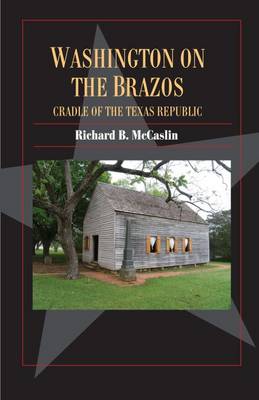Fred Rider Cotten Popular History
1 total work
With Washington on the Brazos: Cradle of the Texas Republic, noted historian Richard B. McCaslin recovers the history of an iconicTexas town.
The story of the Texas Republic begins and ends at Washington,but the town's history extends much further. Texas leadersgathered in the new town on the west bank of the Brazos in March1836 to establish a new republic. After approving a declaration ofindependence and constitution, they fled as Santa Anna's armyapproached. The government of the Republic of Texas returnedthere in 1842, but after the United States annexed Texas in 1846,Austin replaced Washington as the capital of the Lone Star State.The town became a thriving river port in the 1850s, whensteamboat cargoes paid for many new buildings. But thecommunity steeply declined when its leaders decided to rely onsteamers rather than invest in a railroad line, although Germanimmigrants and African American residents kept the town alive.But Progressive Era plans for historic tourism focused the town'scentral role in the Texas Republic brought renewed interest, and astate park was founded.
The Texas centennial in 1936 and the hard work of citizens'organizations beginning in the 1950s transformed this park intoWashington-on-the-Brazos, the state historic site that serves todayas the primary focus for preserving the history of the Republic ofTexas.
The story of the Texas Republic begins and ends at Washington,but the town's history extends much further. Texas leadersgathered in the new town on the west bank of the Brazos in March1836 to establish a new republic. After approving a declaration ofindependence and constitution, they fled as Santa Anna's armyapproached. The government of the Republic of Texas returnedthere in 1842, but after the United States annexed Texas in 1846,Austin replaced Washington as the capital of the Lone Star State.The town became a thriving river port in the 1850s, whensteamboat cargoes paid for many new buildings. But thecommunity steeply declined when its leaders decided to rely onsteamers rather than invest in a railroad line, although Germanimmigrants and African American residents kept the town alive.But Progressive Era plans for historic tourism focused the town'scentral role in the Texas Republic brought renewed interest, and astate park was founded.
The Texas centennial in 1936 and the hard work of citizens'organizations beginning in the 1950s transformed this park intoWashington-on-the-Brazos, the state historic site that serves todayas the primary focus for preserving the history of the Republic ofTexas.
